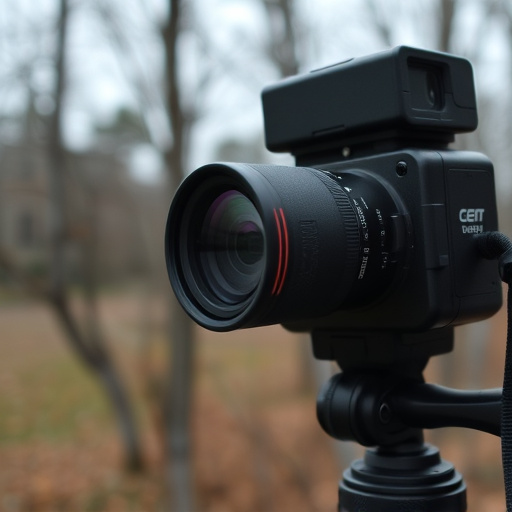In recent years, a growing trend in home security has emerged with the increased popularity of disguised cameras. These innovative devices seamlessly blend into everyday home objects like clocks, smoke detectors, and plants, offering subtle yet powerful protection while maintaining aesthetic appeal. Strategically placed in common areas, they capture footage discreetly, deterring intruders and providing homeowners with peace of mind via real-time video feeds. However, the integration of miniature surveillance devices raises ethical and legal considerations regarding privacy, consent, data handling, and storage, emphasizing responsible use for enhanced Disguised Cameras for Home Protection.
In today’s digital era, discretion is no longer a barrier to enhancing home security. The rise of disguised cameras embedded in everyday objects has transformed residential surveillance. This article delves into the world of miniature surveillance devices, exploring their types, strategic placement, and the legal/ethical dilemmas they present. We also uncover significant benefits for both home security and privacy, highlighting how these tiny yet powerful tools contribute to disguised cameras for home protection.
- Understanding the Rise of Disguised Cameras
- Types and Placement of Miniature Surveillance Devices
- Legal and Ethical Considerations
- Benefits for Home Security and Privacy
Understanding the Rise of Disguised Cameras
In recent years, there has been a significant surge in the popularity of disguised cameras, as homeowners increasingly seek advanced solutions for their security needs. These innovative devices offer a subtle yet powerful way to protect personal spaces, blending seamlessly into everyday home objects. From elegant wall clocks with hidden lenses to intricately designed smoke detectors, these surveillance tools provide an extra layer of peace of mind without compromising aesthetics.
The rise of disguised cameras for home protection can be attributed to the evolving landscape of home security. With increasing concerns about privacy and safety, consumers are opting for discreet yet effective monitoring systems. These advanced devices allow homeowners to keep a vigilant eye on their properties, deterring potential intruders while providing valuable evidence in case of any suspicious activities.
Types and Placement of Miniature Surveillance Devices
Miniature surveillance devices, often referred to as disguised cameras for home protection, come in a variety of forms designed to blend seamlessly into everyday objects. These include small, covert cameras that can be integrated into light switches, power outlets, smoke detectors, and even artificial plants or ornaments. Their compact size allows them to be strategically placed to monitor various areas within the home without drawing attention.
Placement is key when utilizing these devices for security purposes. Common spots include entryways, living rooms, kitchens, and bedrooms. For instance, a camera disguised as a smoke detector can provide valuable footage of any suspicious activity in the hallway outside your bedroom. Similarly, placing a miniature camera within a fake rock or plant near the front door offers discreet surveillance of visitors approaching your home.
Legal and Ethical Considerations
The integration of miniature surveillance devices into everyday home objects raises significant legal and ethical questions. While disguised cameras can offer enhanced home protection and peace of mind for homeowners, they also pose potential privacy concerns. The use of such devices must adhere to strict local laws and regulations regarding surveillance, consent, and data storage. Homeowners employing these technologies should ensure they are transparent about their existence and obtain explicit consent from all occupants, especially when children or visitors are involved.
Ethical considerations include the responsible handling and protection of recorded footage. This involves securing data storage, limiting access, and respecting the privacy rights of individuals captured on camera. Homeowners must be mindful of the potential for abuse or misuse of these devices, ensuring they only employ them for legitimate security purposes and not for intrusive or invasive monitoring.
Benefits for Home Security and Privacy
Miniature surveillance devices, often disguised as everyday home objects, offer a unique and innovative approach to enhancing home security and privacy. These tiny cameras can be seamlessly integrated into various items, such as light bulbs, power outlets, or even decorative figurines, making them virtually invisible to potential intruders. This unassuming presence acts as a powerful deterrent, as thieves and trespassers are less likely to target a property with an unseen security system.
Moreover, disguised cameras provide homeowners with a sense of control and peace of mind. They allow for constant monitoring of sensitive areas, enabling quick response to any suspicious activities. With real-time video feeds accessible via smartphones or computers, residents can stay connected to their homes even when away. This advanced level of privacy ensures that every corner of the house is secured, preventing break-ins and protecting valuable possessions.
The integration of miniature surveillance devices into everyday home objects represents a significant advancement in home security. Understanding the diverse types and strategic placement of these disguised cameras empowers homeowners to protect their spaces and maintain privacy. While legal and ethical considerations are crucial, the benefits for home security and privacy cannot be overlooked. As technology evolves, embracing innovations like disguised cameras for home protection can enhance our living environments, providing peace of mind in today’s digital era.
